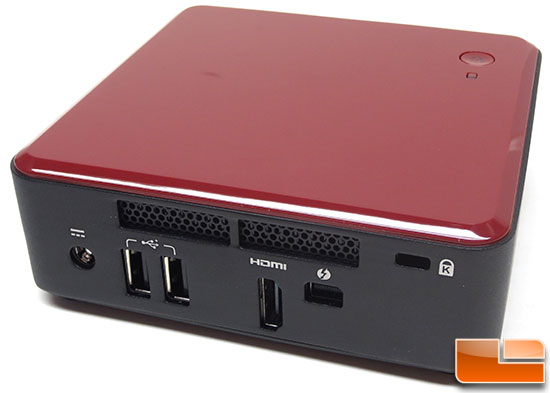Intel NUC DC3217BY Review w/ Windows 8
Final Thoughts & Conclusions
I was able to get the NUC fully assembled and installed Windows 8 in well under 30 minutes. Everything flowed together nicely and this DIY system was easy and fun to put together. The Intel NUC isn’t designed to replace everyone’s desktop PC, but it has enough performance to satisfy the needs of the average PC user. If you play cutting edge game titles at high resolutions or do a ton of processor intensive takes (video transcoding for example) you are still better off with a traditional desktop, but everyone else needs to ask if a form factor like this will be able to get the job done. Having an entire PC in a 4″ x 4″ x 2″ cube is pretty darn impressive and it allows you to completely hide the PC behind the monitor thanks to the VESA mount.

As with any new product the NUC has some hurdles ahead of it. These being the price, the stability issues we encountered and the tough choice of which version to pick. Let’s break down the pricing of the Intel NUC DC3217BY that we reviewed today:
- Intel NUC DC3217BY – $320
- Intel Centrino Advanced-N 6235 – $30
- Intel 520 series 180GB SSD – $199.99
- Kingston 8GB SO-DIMM Kit – $38.98
- 3-prong notebook power cable – $3.00
After adding up the rough costs of all the components in the NUC you are looking at a hardware cost of right around $592! Windows 8 Pro currently runs $55 shipped, so you are looking at a final build cost of ~$650. At this price point it you are starting to get up there and you can get an ATX form factor desktop PC for less that has more options and higher performance than the NUC. That means those that will want the NUC will be looking at it from the space or power savings standpoint. Hopefully over time prices will come down and the pricing issue will work itself out.
The other tough choice is that do you have to choose between two models. Do you want to use a model with Gigabit LAN (DC3217IYE) or Thunderbolt (DC3217BY). You can’t have both in this first generation device and neither supports USB 3.0, which could be a turn off for some.
Lastly, the Intel NUC DC3217BY that I looked at today was having serious issues with the internet use. I covered that pretty well on page four, so I won’t bore you to death, but something just isn’t working right with this design. It appears that the network connection is unable to work properly through both the mini-PCIe slot and the USB 2.0 ports, which is a pretty major issue. We tried everything that we could think of and were not able to get the internet to work 100% of the time. Intel thinks they can fix this with a BIOS update and I really hope they can!

At the end of the day I hope that Intel fixes the NUC and that the price point comes down a bit. The NUC design concept is solid and the form factor and performance is plenty for the average PC user. Intel is rumored to be moving towards Ball Grid Array (BGA) boards where the processors are soldered on and that is basically what the NUC is. The Intel Next Unit of Computing (NUC) sounds like it could be the first device to test the waters! I can’t wait to get my hands on a fully working NUC to see how it does with 24/7 use online. I’ll be sure to bring you more details on the NUC if Intel fixes the issues or if they send out a new model with a fixed board!
Legit Bottom Line: The Intel NUC brings the future a little closer, but it currently has some fairly significant issues that need to be worked out before it is released to the public.

Comments are closed.